- Home
- News
During diving on Koh Tao we can encounter two species of triggerfish on every dive site - Titan Triggerfish and Yellow Margin Triggerfish, especially on Green Rock divesite, next to Nang Yuan Island, where they have their “nests”.
Instructors of our dive center Scuba Birds can help you to identify them by their large heads, “trigger-like” dorsal fin, and protruding incisor teeth. There are approximately 40 species of triggerfish all over the world and PADI Underwater Naturalist course in Koh Tao could help you with identification.
Triggerfish are by far one of the more intelligent species in the aquatic world. The majority of the time they’re just digging out their prey such as worms and crabs by flapping away debris with their fins. They are one of the only fish here that can be seen using coral, rocks, other debris as tools to open tougher shelled prey. They can also spit water and sand into holes to disorientate their prey. If you have your PADI Digital Underwater Specialty course you could take a lot of really nice pictures.
Triggerfish can become aggressive in a very short time on Koh Tao dive sites, especially on Green Rock and South West pinnacle. They want to protect their nests, usually in the sand, and the larger surrounding area above it from other fish and divers simply passing by. Please treat them with respect, while scuba diving in Koh Tao, we are only guests in their world.
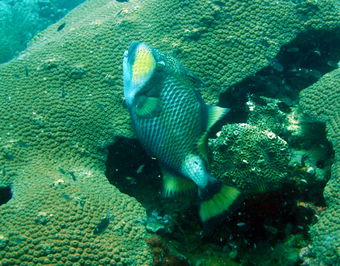
Most of the divers coming for diving in Koh Tao with the expectation to see a whale shark or big turtle and just a few of them notice the smallest inhabitants of Koh Tao’s coral reefs that are the real hidden treasures of the ocean — Nudibranchs, part of the sea slug family. They have different shapes, sizes, and colors. They can be as small as 6mm and as large as 40cm (The Spanish Dancer).
There are more than 3,000 species of nudibranch worldwide, they are found in tropical and temperate seas as well as Antarctica, although they are most common in the shallows. For example, you can find them on Koh Tao’s dive sites White Rock, Twins and Japanese Garden.
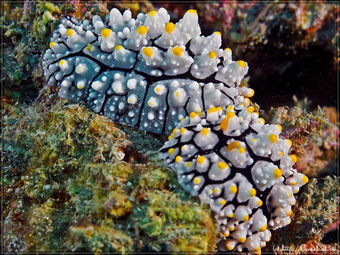
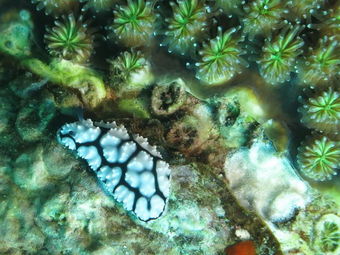
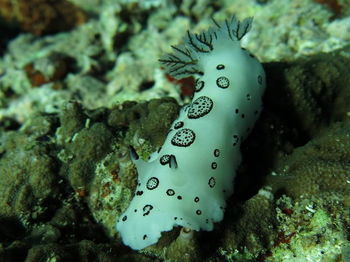
Their scientific name, Nudibranchia, means naked gills and describes the feathery gills and horns that most wear on their backs.
Some nudibranchs are poisonous while others pretend to be poisonous, which is evident by their vibrant colors. They feed on stinging cells of hydrozoans and store them in the rear of their body for protection. They can also ingest toxins from sponges and become toxic and inedible. Some nudibranchs even produce their own chemicals.
Nudibranchs are hermaphrodites. While mating, they fertilize each other, although a nudibranch cannot fertilize itself. They then both lay eggs in a beautiful spiral.
Quite a nice view of this account could be seen at Shark Island dive site, on the south of Koh Tao.
Most nudibranchs are benthic, meaning they crawl on the seafloor, but there are a few species that are pelagic and live in the water column or on the surface. One of these species digests the stinging tentacles of a Portuguese Man-of-War, transferring them from its gut to the surface of its skin as a defense mechanism (Glaucus or Blue Dragon).
The two ‘horns’ of a nudibranch, on top of the head, are actually called rhinophores, these are basically chemical receptors that allow the nudibranch to find food and mates.
Cannibalism exists in the nudibranch world. Some species eat other nudibranchs, as well as nudibranchs of their own species.
Nudibranch is commonly found at all the dive sites around Koh Tao, so keep your eyes open on your dives or just ask your instructor to point them out to you.
During your diving on Koh Tao you will be always suggested to use a compass navigation on the dive sites.
All of us had an introduction to underwater navigation with using dive compass during our PADI Open Water Diver course, but on fun dives, most of the divers prefer to follow the divemaster, whereas knowing exactly where you’re going, where you’ve been and where you are at any given time underwater. It definitely makes diving on Koh Tao a lot more enjoyable and stress-free.
Compass navigation underwater is a piece of cake, just follow few simple rules:
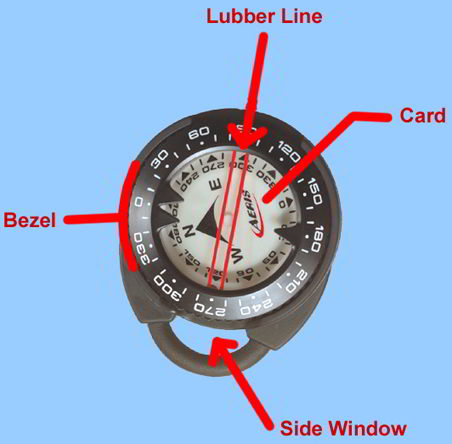


1). Point the long line on your compass (the lubber line) in the direction you want to swim and make sure your body is pointed in the same direction.
2). Rotate the bezel on the top of the compass until the two hatch marks meet the North arrow. As you swim, watch to make sure the North arrow stays between those marks.
3). Keep the compass flat and in line with your body at all times. If you get off-course, turn your whole body, not just the compass, until your heading is back on track.
4). Look up and around periodically to keep an eye on your surroundings. If there is a current or heavy surge, you can be pushed off-course, even if your heading stays true.
5). To return to your starting point, turn your body until the North arrow points at the single hatch mark on the other side of the bezel.
6). Trust your compass. If there is a discrepancy between what you feel and what your compass is telling you, go with the compass. You may not know exactly where you but your compass can point you in the right direction until you recognize one of those land marks you saw on the way out.
7). Get some training. Like every other skill in diving, practice will make you a first-rate navigator, which will open you up to a wider variety of diving possibilities.
And a great way to learn these skills is by taking PADI Underwater Navigation course on Koh Tao or Samui, which provides hands-on training, both on the surface and underwater, and allows you to practice with an experienced navigator (your instructor) on Koh Tao’s dive sites
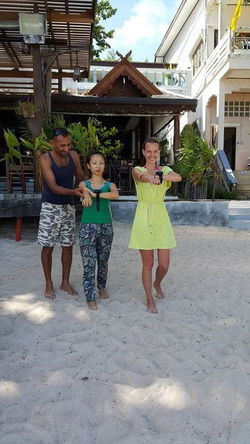
Diving on Koh Tao and Samui Islands presents a lot of symbiotic relations of aquatic life of the Gulf of Thailand.
Everyone knows about symbiotic relations between anemones and clownfish (good example you could see on the dive sites Twins and White rock around Koh Tao), but there is some more interesting partnership between different species under the sea. If you look a little further down on the sandy bottom during your dive at Twins, close to Koh Nang Yuan, you can easily find just perfect partners both of which benefit from their relationship. We are talking about Pistol (snapping) shrimp and Prawn Goby.
The shrimp who builds a burrow in the sand surrounded by shells has very poor eyesight so cannot see any potential danger coming to destroy its
PADI Underwater Naturalist is a brilliant diving course for learning new staff about Koh Tao inhabitants.
Buoyancy World is an artificial dive site in Koh Tao island, located near NangYuan Island, the most popular dive spot in Thailand. The dive site was constructed on a sandy bottom at around 12m depth by Save Koh Tao organization in collaboration with a number of the island's dive centers to provide a training area for new divers, so they don't damage the natural reef when learning buoyancy control.
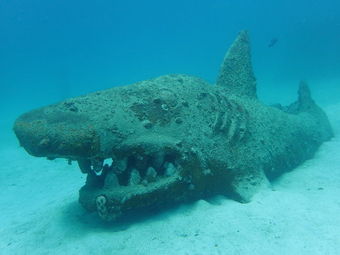
It also includes coral and fish nursery which aims to restore and improve the abundance and biodiversity of Koh Tao's reefs. Expect to see very friendly Red-breasted wrasse, groups of Batfish, White-eyed morays, Parrotfish, few species of Butterflyfish. This dive site consists of sculptures, including a huge shark, an octopus, a gecko, a small “shipwreck”, the Himmapan trees and various hoops, tunnels and cages and very much has the feel of an underwater playground. Buoyancy World is an excellent place for PADI Open Water Diver course training dive, as well as PADI Underwater Navigation course and PADI Peak Performance Buoyancy course.


